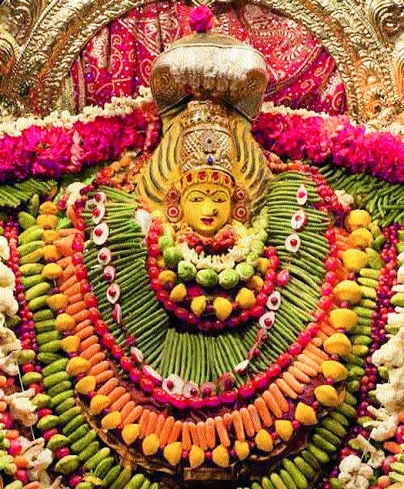Shakambhari Navratri: A festival to pay gratitude to Mother Earth
| Date :10-Jan-2022 |

By Rajendra Diwe :
Shakambhari Navratri from January 10 n Shakambhari Navratri begins on January 10 and ends on 17th n Ashtami Tithi begins at 11:08 on January 09; Ashtami Tithi ends at 12:24 on January 10
India is an agriculture country and all festivals in Indian culture are dedicated to agriculture. Every Indian month right from Chaitra to Falgun has number of festivals which are celebrated with one single reason to pay gratitude to mother earth and nature. Shakambhari Navratri is a festival dedicated to mother earth as it feeds the population of the world with vegetables, fruits etc. According to Indian culture, the period from Pousha Shukla Ashthami to Pousha Pournima is celebrated as Shakambhari Navratri. In many states, Poush Shukla Ashtami is known as Banada Ashtami or Banadashtami.
This Navratri is very special as most Navratri like Chaitra Navratri, Ashwin Navratri etc begin on Shukla Pratipada but Shakamhari Navratri begins on Ashtami and ends on Pournima. Hence, Shakambhari Navratri spans for total eight days. However, in some years, due to skipped Tithi and leaped Tithi Shakambhari Navratri might span for seven and nine days respectively. People across India celebrate Shakambhari Navratri, though it is more popular in the states of Rajasthan, Uttar Pradesh, Karnataka, Maharashtra and some parts of Tamil Nadu. In Karnataka, Shakambhari Devi is known as Banashankari Devi and Banada Ashtami is an important day during Navratri. Shakambhari Mata is incarnation of Devi Bhagwati. It is believed that Devi Bhagwati incarnated as Shakambhari to mitigate famine and severe food crisis on the Earth.
She is also known as Goddess of vegetables, fruits and green leaves and depicted with green surroundings of fruits and vegetables. Goddess Shakambhari has four hands with a bluish skin tone. Mata Shakambhari holds a bow and a lotus in the upper left and right hands respectively and holds fruits and vegetables in the lower right and left hands. It is believed that she feeds those who are hungry with vegetarian food. She is Mother Earth who suffices hunger. Shakambhari Ma is known as ‘the bearer of the greens’ Shaka means vegetables and Ambari means who bears. Major temples dedicated to Goddess Shakambhari are located in Badami and Bangalore in Karnataka, Nagewadi and Kumbhoj in Maharashtra, Uttar Pradesh, and Rajasthan. Shakambhari Navratri culminates on Poush Pournima which is also known as Shakambhari Pournima. Shakambhari Pournima is also known as Shakambhari Jayanti as it is believed that Devi Shakambhari was incarnated on the same day. In the Devi Mahatmya, it is said that Goddess Durga appeared as Shakambhari after a dry period of hundred years. She brought forth from her body fruits, flowers, vegetables and herbs to suffice the hunger of the people.